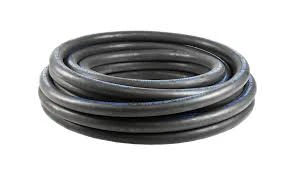Understanding Hole Issues in Power Steering Hoses and Their Impact on Vehicle Performance
Understanding Holes in Power Steering Hoses Causes, Symptoms, and Solutions
Power steering systems are an essential component of modern vehicles, providing drivers with the ease of steering that has become a standard expectation. Among the various components of this system, the power steering hose plays a crucial role in facilitating fluid transfer, which in turn assists in the steering mechanism's operation. However, over time, these hoses can develop holes, leading to fluid leaks and potential steering issues. In this article, we will explore the causes, symptoms, and solutions related to holes in power steering hoses.
Causes of Holes in Power Steering Hoses
1. Wear and Tear Like all rubber parts in a vehicle, power steering hoses are subject to wear and tear over time. Exposure to heat, pressure, and environmental factors can lead to the degradation of the hose material, causing it to crack or develop holes.
2. Fluid Contamination The fluid used in power steering systems can be contaminated by dirt, debris, or other substances, leading to hose degradation. Contaminated fluid can cause the hose material to become brittle and less flexible, increasing the likelihood of holes forming.
3. Improper Installation If the power steering hose is not installed correctly, it may rub against other components of the vehicle or be subjected to excessive bending. This improper installation can lead to premature wear and the formation of holes.
4. Corrosion In some cases, metal components connected to the power steering hose can corrode, leading to leaks. While this may not directly affect the hose itself, it can cause fluid to leak onto the hose, leading to further degradation.
5. Extreme Temperatures Vehicles operating in extreme temperatures—whether due to hot weather or harsh winter conditions—may experience more rapid wear on their power steering hoses. Extreme heat can cause the material to become brittle, while extreme cold can lead to increased fragility.
Symptoms of a Damaged Power Steering Hose
The symptoms of a hole in a power steering hose can often be subtle at first but can escalate quickly. Here are some common signs to watch for
1. Fluid Leaks One of the most obvious signs of a damaged power steering hose is the presence of fluid leaks. If you notice a puddle of reddish or clear fluid under your vehicle, it may indicate a leak in your power steering system.
hole in power steering hose

2. Steering Difficulty If you experience difficulty steering or notice that the steering wheel feels stiff, it may be a sign that the power steering system is not receiving enough fluid due to a hose leak.
3. Whining Noise A whining or groaning noise when turning the steering wheel can indicate that the power steering pump is struggling due to low fluid levels, which might be the result of a leaky hose.
4. Unusual Smells If the power steering fluid is leaking onto hot engine components, it can produce a burning smell. This can be both a smell of burnt rubber and the oil itself, indicating hose failure.
5. Warning Lights In some vehicles, the power steering system may be equipped with sensors that trigger warning lights when there is a fluid leak or low fluid level, alerting the driver of a potential issue.
Solutions for Holes in Power Steering Hoses
If you suspect that your power steering hose has developed a hole, it is crucial to address the issue promptly to avoid further damage to the power steering system and ensure safe vehicle operation.
1. Inspect the Hose Conduct a thorough inspection of the power steering hose and surrounding components. Look for visible signs of wear, cracks, or leaks. If necessary, consult a professional mechanic for a detailed assessment.
2. Replace the Hose In most cases, the best solution for a hole in a power steering hose is to replace it entirely. This ensures that the system will function correctly and prevents future leaks.
3. Flush the System After replacing the hose, it may be beneficial to flush the power steering system to remove any contaminated fluid, ensuring optimal performance.
4. Regular Maintenance To prevent future issues, perform regular maintenance checks on your vehicle’s power steering system. This includes inspecting hoses, replacing fluid as needed, and ensuring proper installation.
In conclusion, understanding the significance of power steering hoses and recognizing the signs of wear can help vehicle owners in maintaining their power steering systems effectively. By being proactive and addressing any issues immediately, drivers can ensure a smoother and safer driving experience.
-
Ultimate Spiral Protection for Hoses & CablesNewsJun.26,2025
-
The Ultimate Quick-Connect Solutions for Every NeedNewsJun.26,2025
-
SAE J1401 Brake Hose: Reliable Choice for Safe BrakingNewsJun.26,2025
-
Reliable J2064 A/C Hoses for Real-World Cooling NeedsNewsJun.26,2025
-
Heavy-Duty Sewer Jetting Hoses Built to LastNewsJun.26,2025
-
Fix Power Steering Tube Leaks Fast – Durable & Affordable SolutionNewsJun.26,2025

